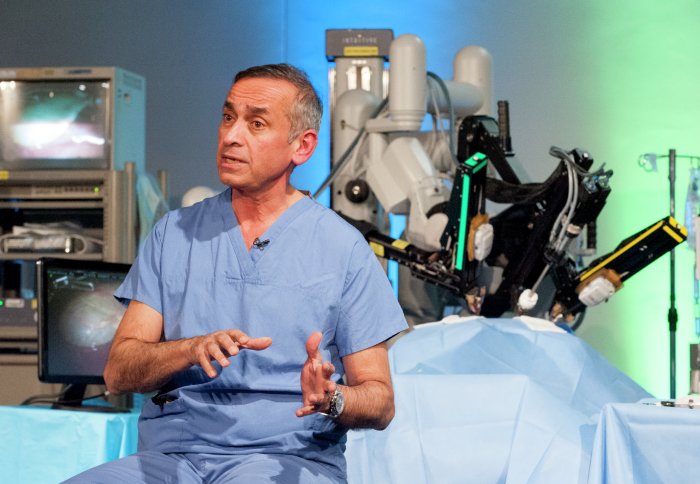by Professor the Lord Darzi of Denham
Let me start with a personal story. I am a surgeon by training. Colleagues used to call me ‘robo-doc’ because of my interest in robotic keyhole surgery and because I helped to champion its use during a time when a surgeon’s reputation was measured by the size of his incisions. My journey into the academic study of patient safety happened naturally, aided by my interactions with patients and their carers. In fact, it was the quality of care that first drew me in.
I remember the first 24 hours after my very first keyhole surgery as if it was last week. I remember so vividly because never have I witnessed such drastic differences in patient outcomes as a result of a singular change in the way care was delivered. Almost immediately the patient was able to eat, walk without any assistance and, most importantly, with very little pain. We had dared to explore something different when the norm was not good enough. This was the start of my determination to do better.
Now let me give you some numbers. Say you were to take a flight, from somewhere to anywhere. The International Air Transport Association (IATA) estimates had you taken that flight in 2016, you would have had a 0.111161% probability of experiencing an accident, an improvement of 54% over the last 10 years.[1] Now, let’s say you were horribly sick and had to be admitted to the local hospital. Our own research at Imperial College London, in collaboration with colleagues at the London School of Tropical Hygiene, shows that around 5% of deaths in acute English hospitals have a 50% or greater chance of being preventable.[2] In summary: you may be worse off for seeking the care that you need.
Numbers like these are the reasons why I do what I do.
I’ve been doing academic research for a long time and have, in one way or another, been involved in quality and safety over my whole career. At the intersection of these two domains, lies one of my consuming passions. I’ve been involved with the NIHR Imperial Patient Safety Translational Research Centre (NIHR Imperial PSTRC) for more than a decade. We weren’t known as the PSTRC nor were we exclusively dedicated to research in patient safety until 2012 (we were previously known as the Centre for NHS Patient Safety & Service Quality, the CPSSQ). I became Director of the Imperial PSTRC in 2013, following the retirement of Professor Charles Vincent, a good friend and highly respected colleague. In the past five years, our research has focused on topics such as skills and team-training; the effect of adverse events on patients and their carers, and how best to support them through the processes; the incorporation of technology and design to make care safer and more efficient; and much, much more. As we prepare for the next five years, I cannot help but feel pride in what we’ve achieved.
For example, we developed Hark, a platform for managing and prioritising the thousands of clinical tasks that medical staff must carry out each day. How obvious is the idea that clinical staff should be using secure mobile phones to view and action clinical tasks, rather than out-dated paper records? We designed a system which allows ward managers to enter, prioritise and allocate tasks easily. Hark has since been acquired by Google DeepMind and is being used in its first clinical trial.
We redesigned the prescription chart. More than one in 15 hospital prescriptions contains some kind of error, usually because the writing is illegible or some information is missing. We gathered a team of behavioural scientists, designers and academics to examine the problem. We removed free text fields and instead required medical staff to circle pre-printed prescription quantities, using colour coding for the length of treatment. This study goes a long way to show that not all change needs to be complicated and consume extra resources. Instead, we need to continuously refresh the way we frame problems and solutions in patient safety.
I want to take this opportunity to thank each and every single one of the many excellent research staff we have worked with in the past. Thank you for rising to the occasion time and time again, and for pushing yourselves, and me, that much further. Without your hard work, we would never have come this far.
Tomorrow marks the first day of the next five-year research grant. Thanks to funding organisations such as the National Institute for Health Research (NIHR), we have the great privilege of continuing to do research in this important area. I am excited about the next five years, and I will be sharing more details on the direction of our research in my blog post tomorrow. For now, if you would like more information about our research outputs so far, please download our brochure here.
[1] ITIA, SAFETY REPORT 2016, 2017.
[2] Hogan et al., BMJ Qual Saf, 2012.
